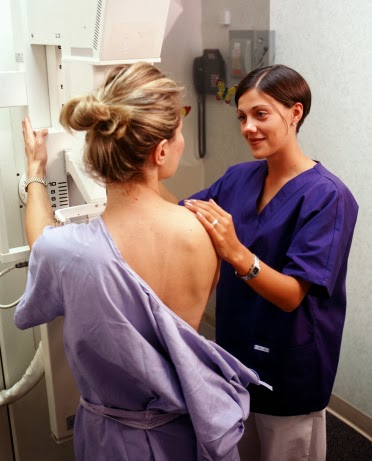Doctors at Magee-Womens Hospital of UPMC have a message for women who might be confused about the latest headlines about breast cancer screenings: Don’t cancel your appointment for a mammogram.
A widely publicized study last week claimed that women who had mammograms and those who didn’t had the same death rates from breast cancer, and that having mammograms increased the chance of overdiagnosis and unneeded treatments. But breast cancer experts at UPMC are urging women not to give up on getting mammograms, which they say absolutely save lives.
“We’re improving ways to diagnose and treat breast cancer every day as we learn more about this complex disease and our technology improves. Mammography is an important tool that we have to detect cancer, and other studies have shown how effective it can be,” said Jules Sumkin, D.O., chief of radiology at Magee.
As doctors move toward a more personalized approach to medicine, the key will be to assess a woman’s risk to make sure she is getting the best screening test based on her individual risks, Dr. Sumkin said. And then doctors need to become more sophisticated in how they treat what they find by developing more targeted therapies, he said.
Margarita Zuley, M.D., director of breast imaging at Magee, said the Canadian study gaining so much attention again was poorly designed, with several published articles explaining that the way the patients were enrolled essentially voided randomization. Women included in the study all had a breast exams prior to being assigned to either group and many women with palpable breast masses were assigned to the mammography arm. Screening mammography is supposed to be for women without clinical concerns. This along with several other fatal flaws has led the American College of Radiology and Society of Breast Imaging to call the study an “incredibly misleading analysis” and noted that the study results “should not be used to create breast cancer screening policy as this would place a great many women at increased risk of dying unnecessarily from breast cancer.”
“What is truly important in this discussion is understanding that mammography, while still credited with a 35 percent improvement in multiple other large population based trials, is not a perfect test,” Dr. Zuley said. “We have learned from the controversy that we must work harder to find tests or combinations of tests that detect early aggressive breast cancers which can hide on a mammogram while at the same time reducing overdiagnosis of indolent cancers that may never become a clinical problem. In addition, our surgical and medical oncology colleagues also need to reduce overtreatment of some cancers.”
“We continue to recommend that women get mammograms starting at age 40 and continue with yearly mammograms. If a woman has a strong family history of breast cancer, she should consult with her physician to determine the ideal age to begin screening, which may be earlier than age 40,” Dr. Zuley said.
UPMC offers several other screening options that can be done in addition to mammography. Tomosynthesis, or 3-D mammography, uses low-energy X-rays to create a 3-D image of the breast.
“This exam holds much promise for us to improve our care to women because it has an approximate 30 to 40 percent increase in invasive cancer detection along with a 30 to 40 percent decrease in false positive screening exams,” Dr. Zuley said. “So this a more accurate test and may be finding those hidden invasive cancers that we missed on mammography.”
Also, ultrasound imaging uses high-frequency sound waves to produce images, and may be used in addition to mammography to help radiologists determine if abnormalities in the breast are solid tumors or fluid-filled cysts. And magnetic resonance imaging (MRI) is used in conjunction with traditional mammography to provide high-quality images that may lead to the early detection of breast cancer for high-risk women.








